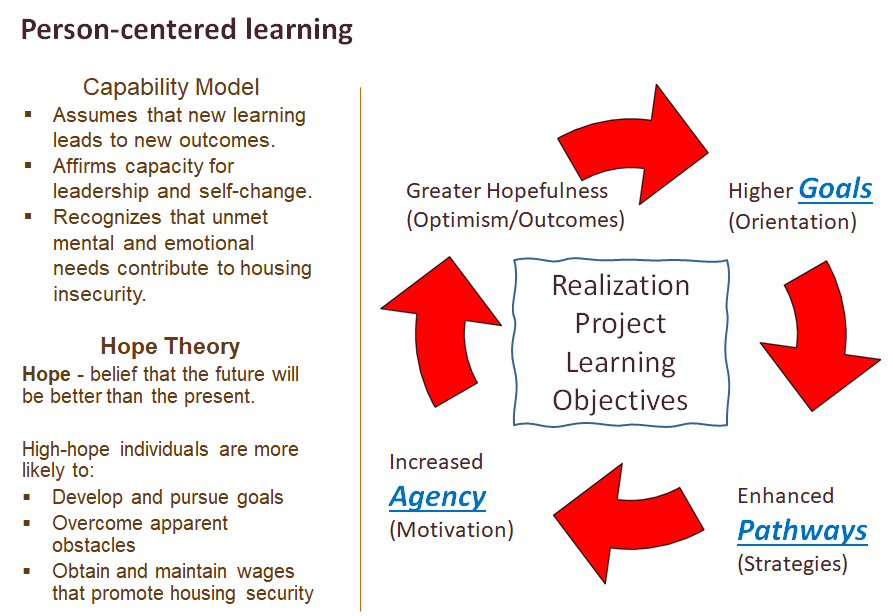Homelessness is an Income Problem
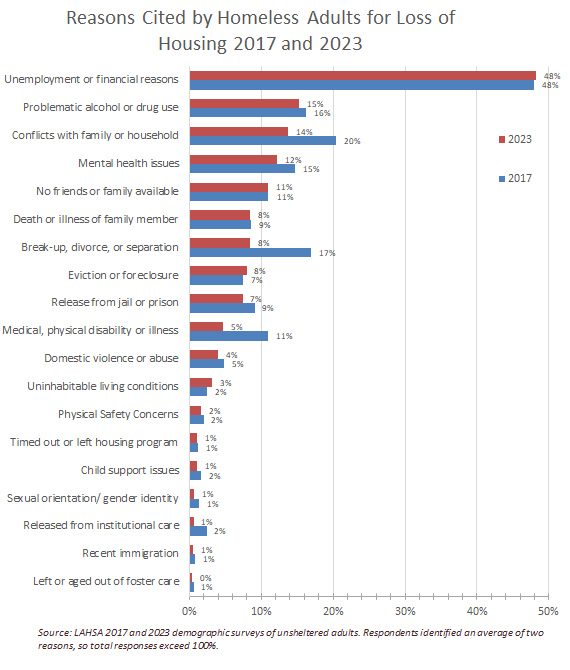 The most common reason unhoused individuals give for why they do not have a place of their own to live is unemployment and lack of income. Homelessness, according to those with lived experience, is primarily a problem of income.
The most common reason unhoused individuals give for why they do not have a place of their own to live is unemployment and lack of income. Homelessness, according to those with lived experience, is primarily a problem of income.
Building more affordable housing is essential for solving this crisis, but is not a stand-alone solution to growing homelessness. We cannot build our way out of this problem when there is a steady inflow of new people becoming chronically homelessness.
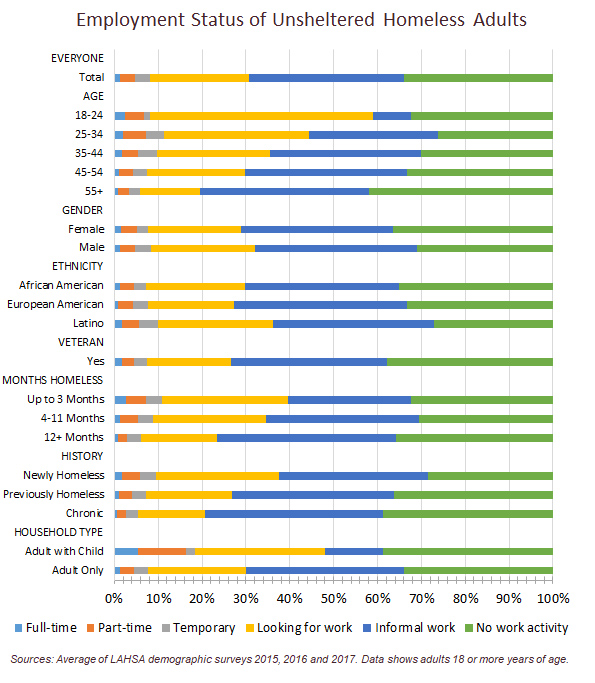 The majority of unhoused adults in Los Angeles County make an effort to earn money. Their drive to support themselves is an asset for their communities and opens possibilities for individuals to propel their own trajectories out of homelessness.
The majority of unhoused adults in Los Angeles County make an effort to earn money. Their drive to support themselves is an asset for their communities and opens possibilities for individuals to propel their own trajectories out of homelessness.
Predictive Screening
In 2020, the Economic Roundtable launched the Realization Project, which is the first rapid re-employment program that uses predictive screening tools that target workers who have a high risk of becoming persistently homeless. These evidence-based, innovative tools identify individuals who are likely to become persistently homelessness by combining the predictive power of 49 pieces of information about an individual’s attributes and personal history.
High-risk individuals can be prioritized for access to early, comprehensive interventions. The employment-based pilot demonstration was planned and launched in collaboration with thirty organizations, convened by The Economic Roundtable, the California Labor and Workforce Development Agency, and the Los Angeles Federation of Labor.
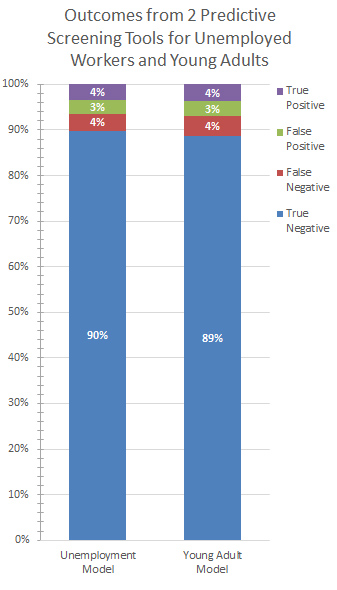 The project engaged 42 young adults across three 10-month cohorts, which each lasted for an academic year. These participants were students at Long Beach City College who had a high risk of persistent homelessness and who wanted to support themselves by working.
The project engaged 42 young adults across three 10-month cohorts, which each lasted for an academic year. These participants were students at Long Beach City College who had a high risk of persistent homelessness and who wanted to support themselves by working.
System Change
Systems change efforts in the homeless services sector commonly target failures in social service, public health, and affordable housing. However, this overlooks the labor market. Employment is key to expanding the tools for combatting homelessness because it engages individuals’ capacity for self-determination. Employed adults earning sustaining wages are unlikely to become persistently homelessness.
By addressing homelessness as an issue of economic opportunity and human potential, rapid re-employment programs can bring workers back into the labor force and help them thrive. This requires comprehensive programs that provide career training, childcare, behavioral healthcare, temporary housing, and support for basic needs, as well as holistic socioemotional and moral support.
Traumatic experiences and systemic injustice are universal among individuals on the path toward persistent and chronic homelessness. These confidence-shattering traumas, including foster care, incarceration, ethnic bias, and unemployment have strong predictive power for future likelihood of homelessness. They are also core emotional wounds that, once healed, are no longer hindrances to the rebuilding and restoration that these individuals desire and deserve.
Person-Centered Model
The Realization Project was rooted in a holistic, person-centered capability model. It assumed that with greater education and experience, virtually anyone will perform better in a particular field. This affirms individuals’ inherent capacity for self-directed change and growth, while acknowledging the role that unmet physical, mental, and emotional needs play in cycles of poverty. The screening tools and curriculum material from the project are in the public domain.
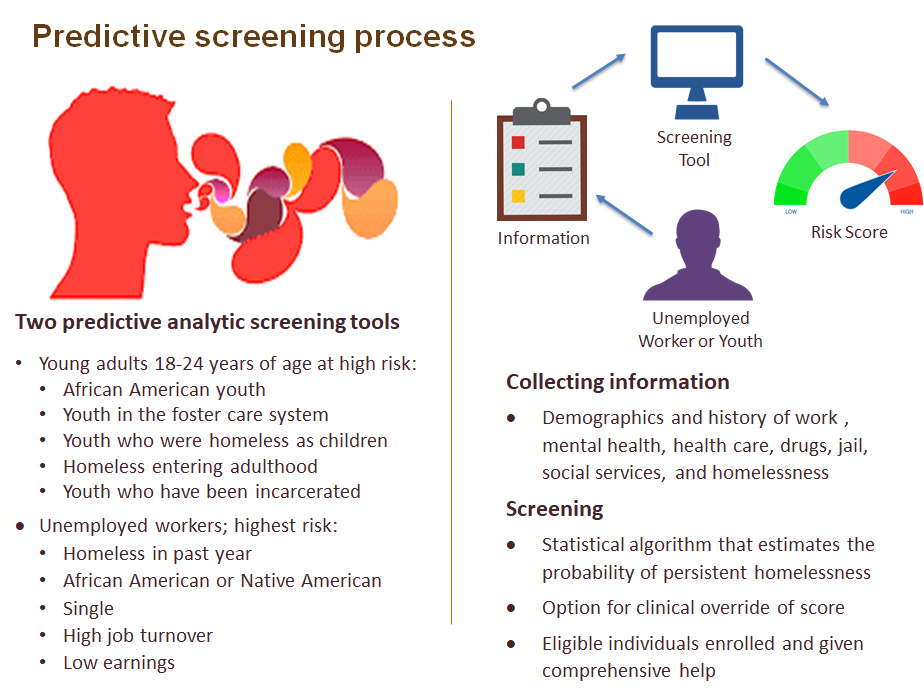 Each cohort member received temporary housing support in the form of placement in a housing site or a monthly rent support subsidy ranging from $500-700. This amount of housing support proved to be enough to pay for shared housing or to fill rent gaps. It also avoided the problem of creating an enormous subsidy cliff when participants graduated from the project.
Each cohort member received temporary housing support in the form of placement in a housing site or a monthly rent support subsidy ranging from $500-700. This amount of housing support proved to be enough to pay for shared housing or to fill rent gaps. It also avoided the problem of creating an enormous subsidy cliff when participants graduated from the project.
Housing security enabled individuals to excel in school, expand career searches and training, and generally breathe easier because of guaranteed housing security during their time in the project.
Project participants also received heavy-touch case management and participated in a curriculum designed to establish and attain goals for sustaining employment.
Hope
Well-paying jobs lift people out of homelessness and applied hopefulness lifts people into well-paying jobs. High-hope individuals adapt strategies to overcome obstacles more easily than low-hope individuals. High-hope individuals are more likely to find and maintain higher earnings that provide housing security. The curriculum was designed to share concepts and engage processes to increase hopefulness in three specific areas: goals, agency, and pathways.
Concrete goals empower people to visualize the future they want and help clarify choices about how time and energy are invested each day. They allow a person to reverse-engineer their future, beginning with the end in mind.
Agency is the persistent belief that identified pathways will lead to attaining goals. It is the motivational component of hopefulness. The project crafted learning experiences that developed self-confidence and fostered an enhanced sense of agency. This was crucial for combatting the vicious cycle of trauma that leads to decreased earning capacity and then to homelessness, which inflicts further physical, mental, and emotional trauma.
Pathways thinking involves finding strategies that provide a course toward achieving goals despite barriers and complications. Pathways thinking is enhanced by developing skills that include meditation, financial literacy, and job search abilities such as resume writing.
Diversity
Participants represented a diverse cross section of people experiencing homelessness. There were slightly more females than males and seven percent were non-binary.
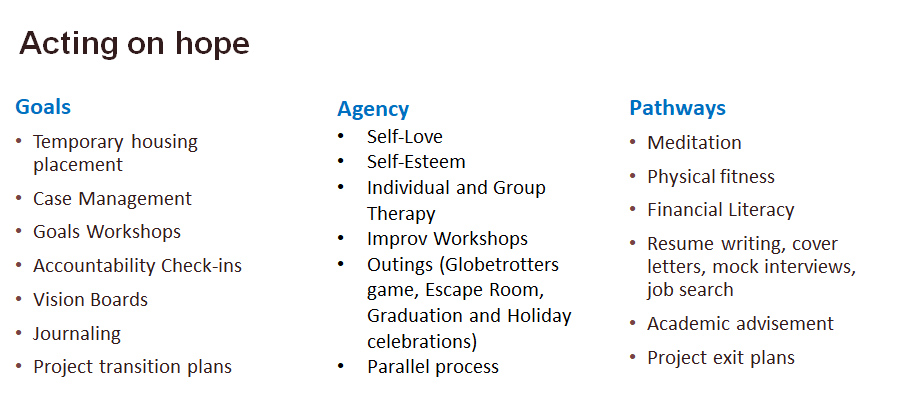 Similar shares of African-Americans and Latinos made up roughly three-quarters of participants, with the balance made up of similar shares of Asian Americans and European Americans. Three-quarters of participants were in the 18 to 35 age range.
Similar shares of African-Americans and Latinos made up roughly three-quarters of participants, with the balance made up of similar shares of Asian Americans and European Americans. Three-quarters of participants were in the 18 to 35 age range.
Half of the participants had been incarcerated, about a quarter had been in substance abuse recovery programs, and about a quarter were custodial parents while in the project. One in six had been in foster care.
Outcomes
Participation in the Realization Project resulted in improved outcomes as shown by hopefulness, employment, and housing stability. Participants’ exit scores on the Hope Scale Adult Assessment increased by nine percent over their scores at intake, with longer tenured participants having the greatest increases in hopefulness.
Ninety-five percent of participants had stable housing after they left the project. Their employment rate was 41 percent higher when they left the program than when they entered. Among those who were employed at intake, the share earning more than $20 an hour more than doubled, with 54 percent of project alumni earning more than $20 an hour, and 18 percent earning more than $25 per hour.
Cost
The Realization Project’s holistic rapid re-employment model had an average cost of $17,150 for each cohort participant, which is virtually the same as one year of public costs for demographically comparable counterparts who did not receive help. The difference is that the counterparts who did not receive help are likely to need costly public services year after year.
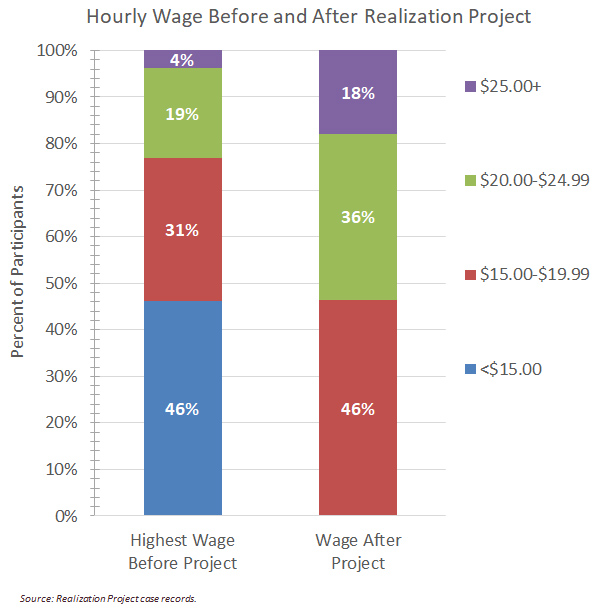 In contrast, most Realization Project participants developed life-changing capabilities to act with greater self-determination and competence for achieving their goals for employment and housing stability.
In contrast, most Realization Project participants developed life-changing capabilities to act with greater self-determination and competence for achieving their goals for employment and housing stability.
Next Steps
System changes must be made at both the policy and operational levels to gain the full benefit of employment as a strategy for combatting homelessness. These seven system changes are the next steps.
- Give equal support to interventions that prevent persistent homelessness before it occurs as to interventions after-the-fact for individuals who are living a life of homelessness.
- Use proven and reliable predictive screening tools such as those developed by the Economic Roundtable to screen for risk of persistent homelessness and to guide targeted interventions for high-risk individuals before they become persistently homeless.
- Recognize that homelessness is as much a problem of lack of income as it is a problem of lack of affordable housing.
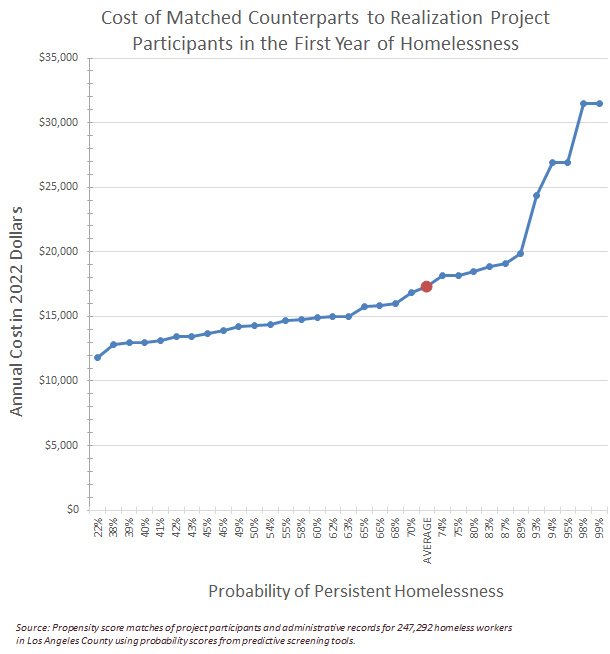
- Scale-up funding for programs that combat homelessness through employment in jobs that pay living wages.
- Update the guidelines for the coordinated entry system that is used to prioritize access to deeply subsidized housing for homeless individuals to permit preventative access to temporary housing for individuals who are identified by reliable predictive screening tools as being at high risk of persistent homelessness and who are participating in an employment-based homeless intervention.
- Replicate the whole-person model of comprehensive, heavy-touch services for employment-based interventions to combat homelessness.
- Establish funding and service delivery collaboration between organizations that touch homeless individuals and that collectively can provide a whole-person response. This includes:
- Homeless services funders and service providers
- Employment training funders and service providers
- Public social services systems
- Affordable housing providers
- Community colleges
- Four-year colleges
- Labor unions, including construction apprenticeship programs
- Philanthropic foundations
Press Coverage
A New Approach to Homelessness Shows Striking Success
Paul Rosenberg, Random Lengths News (February 22, 2024)

